Determining the Value of a Diamond
Diamonds are prized for their rarity, beauty, and luxury. Their timeless allure and romantic symbolism make them extremely valuable, socially and monetarily. Knowing the true value of a particular diamond is important for buyers, sellers, and collectors alike, as it helps ensure fair transactions and overall transparency.
The answer to the question “What is my diamond worth?” depends on certain measures of quality. The primary system of evaluating a diamond’s worth relies on what are commonly called “the four Cs.” These include the diamonds carat, clarity, color, and cut. There is also an element of shape, which is technically distinct from the stone’s cut.
Carat
A diamond’s carat measurement refers to its weight, where one carat equals 0.2 grams (200 milligrams). Weight does not always translate into overall size or dimension, but larger diamonds generally tend to have a higher carat weight.
Carat weight is an important factor in a diamond’s value, as many buyers find heavier, larger stones to be more prestigious and, therefore, preferable. Heavier stones also tend to be less common, so the demand helps to drive up the price. Of course, a beautiful diamond also has good balance between the 4 Cs. A heavy diamond that scores poorly in other categories may not be as valuable.
Clarity
The clarity of a diamond is a measurement of how many flaws are present in the stone. Internal and external flaws, known as “inclusions,” can cause the diamond to look cloudy. The higher a diamond’s clarity, the fewer flaws it has.
The Gemological Institute of America (GIA) uses a clarity grading scale that ranges from “flawless” to “included.” A perfectly clear diamond with no blemishes visible under 10x magnification is considered flawless. A diamond with flaws that can be seen by the naked eye is considered “included.” A diamond with a few inclusions that are only visible on magnification will fall somewhere in between and can still fetch a decent price and look beautiful in jewelry.
Color
Naturally derived diamonds often have a subtle warmth, commonly caused by nitrogen in the crystalline structure. Unlike other factors affecting diamond prices, more color in a diamond doesn’t necessarily mean a higher value. In fact, it’s generally the absence of color that makes a diamond more expensive.
The GIA grades diamond color on a letter scale ranging from D (colorless) to Z (light yellow or brown). The lighter the color, the more highly prized the diamond, making colorless and near colorless diamonds the highest in value. However, certain fancy diamonds that have rich, vibrant colors (like blue or pink) are desirable for their unique beauty.
Cut
The cut of a diamond refers to its general proportions, geometry, faceting, and overall craftsmanship. Because tastes are subjective, the quality of a cut is evaluated primarily on how well the facets reflect and refract light. Different cut depths and angles direct light rays in unique ways, affecting the diamond’s brilliance, fire, and scintillation. In other words, the cut is responsible for the sparkle.
The GIA grades diamond cut on a scale ranging from excellent to poor, based on how well it optimizes the light performance of the stone. The more brilliantly the diamond uses light to create sparkle and shine, the higher the cut rating and diamond price.
Shape
While cut deals with the faceting and sparkle of the stone, shape refers to a diamond’s overall silhouette. This is one of the first features that consumers focus on, as the shape of a diamond plays a major role in its visual appeal and styling. Different shapes lend themselves to different aesthetics, and different people have unique tastes.
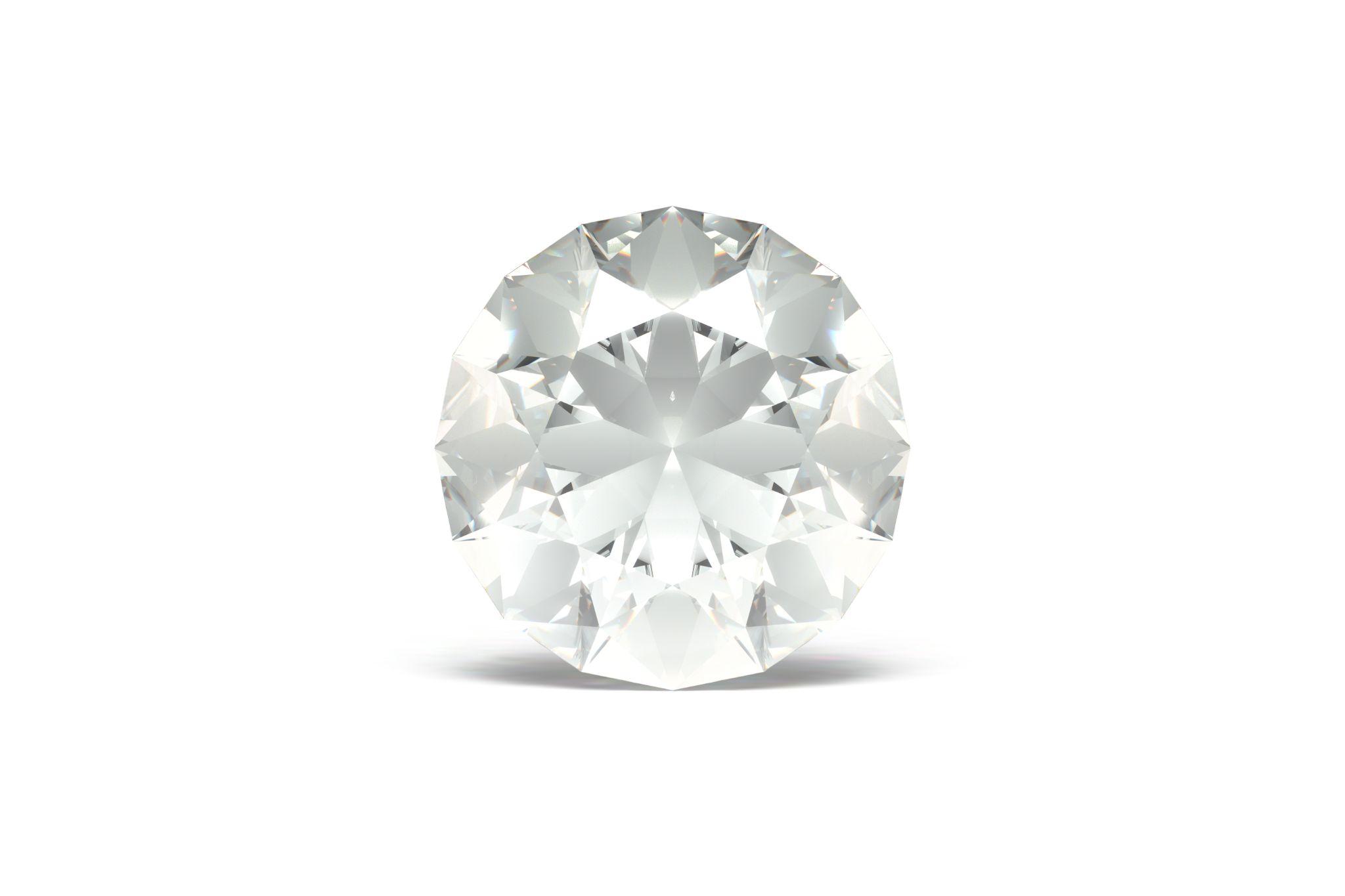
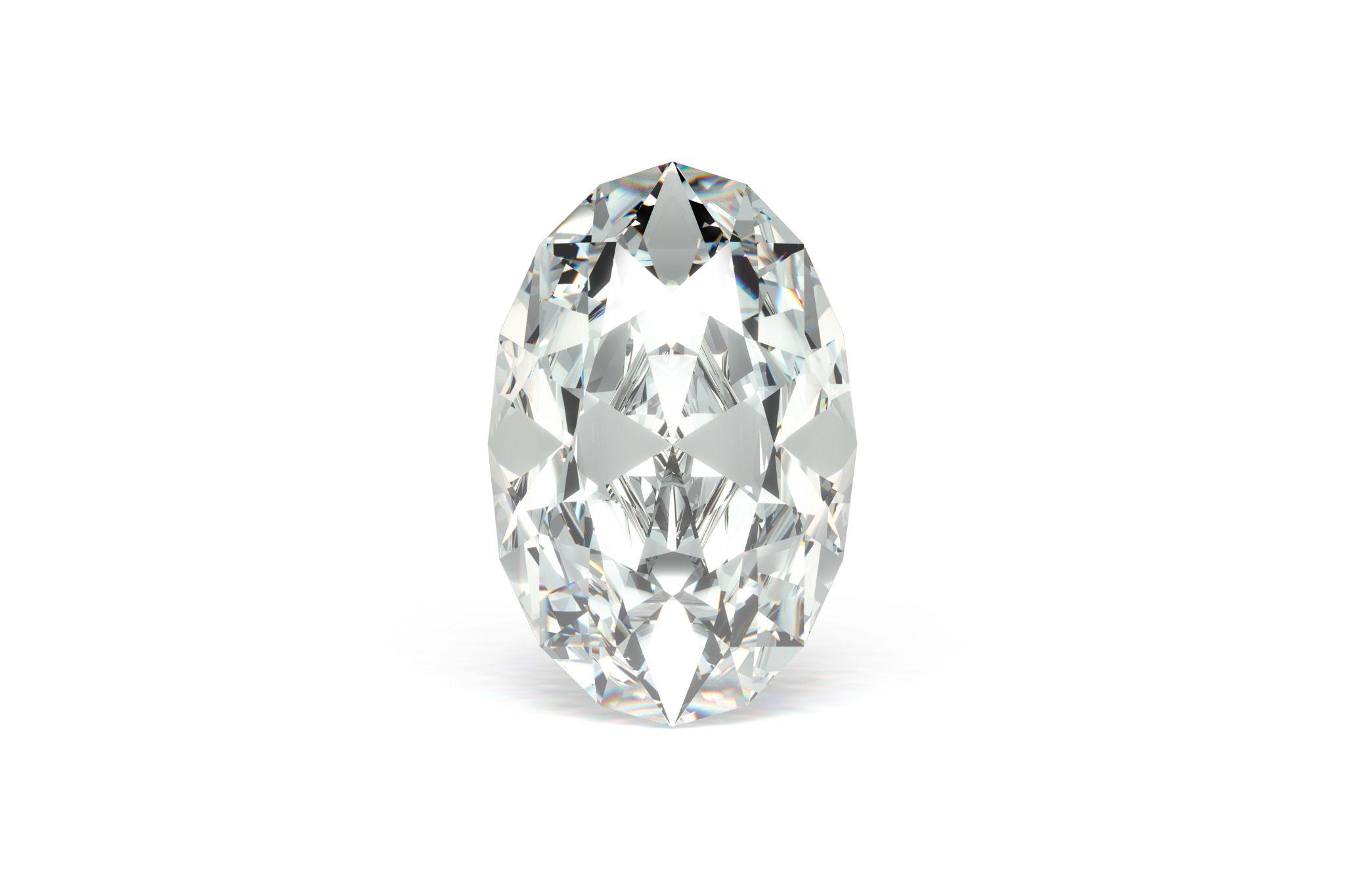
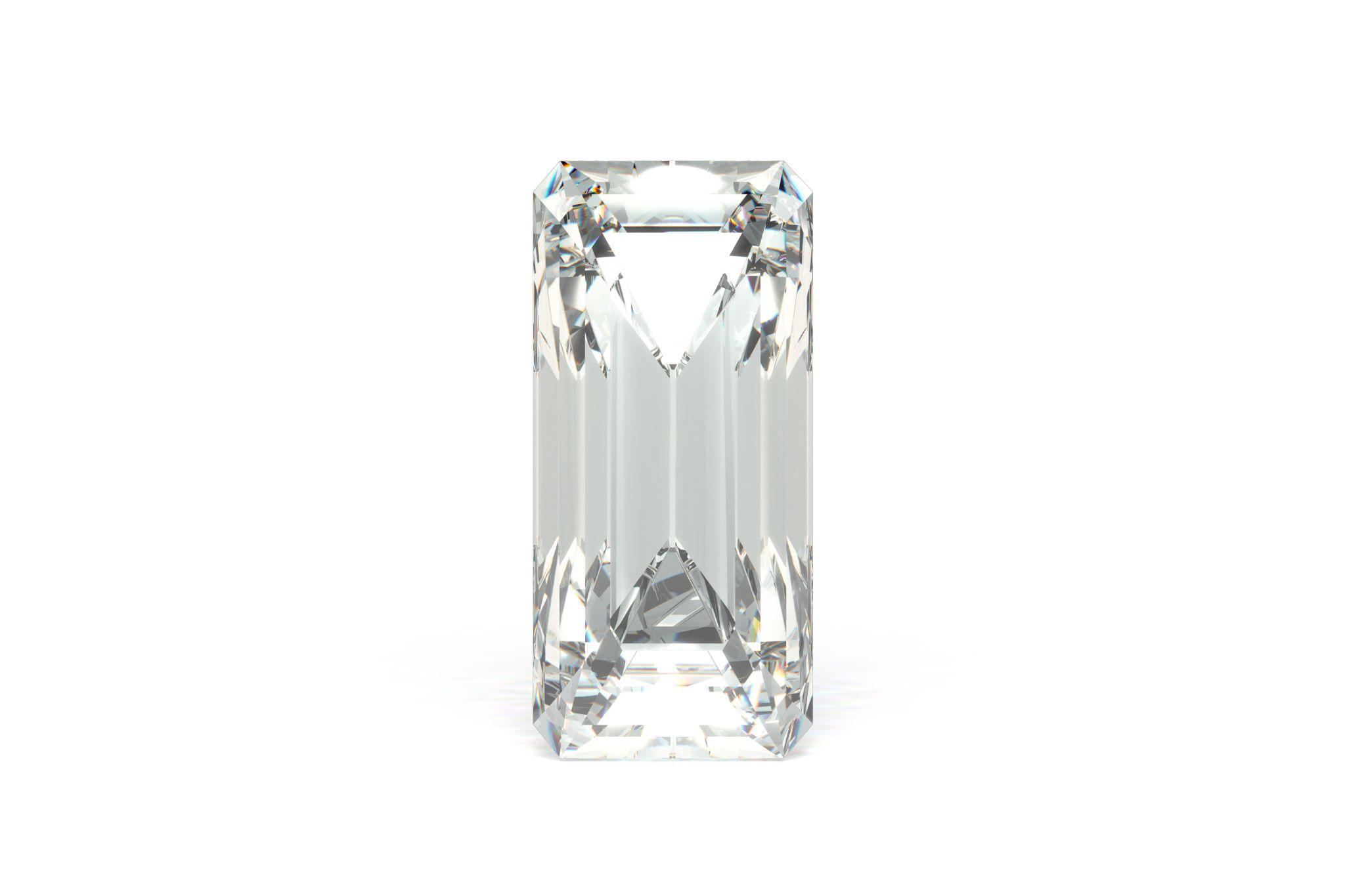
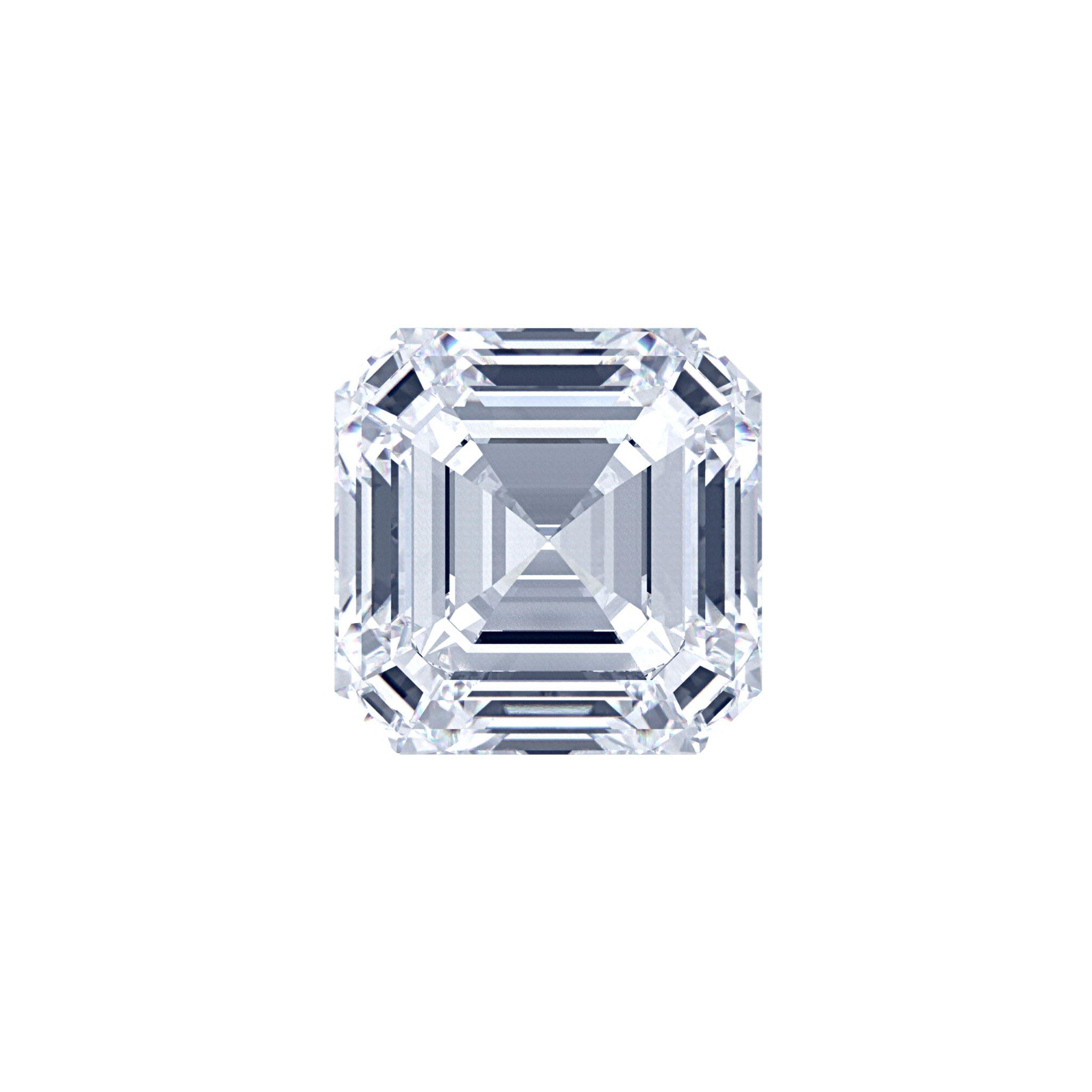




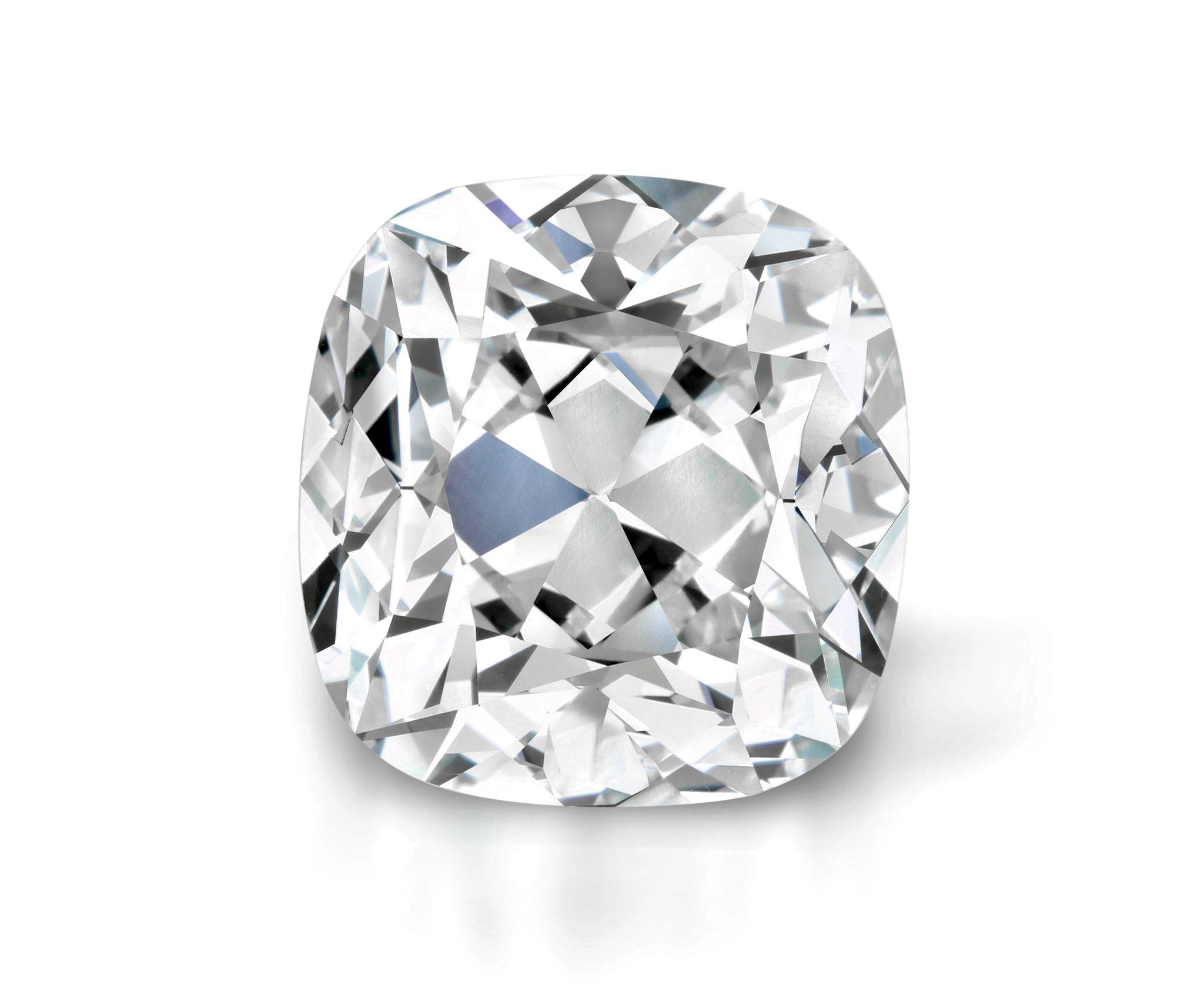
Round
The round shape, commonly paired with a brilliant cut, is extremely popular for its classic, timeless look. The round brilliant design features a circular silhouette with very precise faceting that maximizes its sparkle and fire. With its flashy yet simple style, the round diamond is an iconic choice for engagement rings and more.
Oval
Oval-shaped diamonds feature an elongated silhouette with rounded ends. The oval typically features a modified brilliant cut, with similar faceting and sparkle to a typical round brilliant diamond. This shape offers a classic, elegant aesthetic, and its elongation creates an illusion of length. When set into a ring, this illusion makes fingers appear more slender.
Emerald
An emerald-shaped diamond is a very distinctive yet elegant choice featuring a rectangular silhouette and sharp, sophisticated step-cut facets along the edges. The flat, unfaceted center highlights the color and clarity of the stone, while the sides produce a glamorous sparkle. Combined with its angular appearance, the result is refined and chic.
Asscher
The asscher is something like a square-shaped emerald, as it also features step-cut faceting. However, the shorter side length and trimmed corners create a bit more flash and sparkle. Asscher-shaped diamonds are often seen as having a vintage look, making it a perfect choice for timeless, old-world glamor.
Marquise
Marquise diamonds are elongated with pointed ends, similar to the shape of an almond. Much like the oval, the marquise shape has a lengthening effect that elongates the fingers when worn on a ring. This sleek, curvaceous shape also maximizes carat weight, which helps the stone to look substantial on the wearer.
Radiant
Radiant-shaped diamonds are either rectangular or square, with faceted edges and truncated corners. The simple design is perfect for highlighting the hue of colored diamonds, while the cut corners give it a soft yet modern look. The corners also help to reduce the likelihood of chipping, making it a durable choice for daily wear.
Pear
This charming, asymmetrical shape blends the pointed end of a marquise with the curved silhouette of the round diamond. The result is a beautiful teardrop shape that has both classic elegance and unique allure. Pear-shaped diamonds are less common than their symmetrical counterparts, which makes it desirable for eye-catching pieces that stand out from a crowd.
Princess
A popular contemporary option, the princess shape combines a square or rectangular silhouette with the showy faceting of a round brilliant. With its sharp corners and clean, angular lines, the princess shape is a bold and striking one that is well suited to a solitaire ring or set of stud earrings.
Cushion
Cushion-shaped (or pillow-shaped) diamonds have a romantic, vintage appeal. The square or rectangular silhouette is combined with soft, curved edges to give an otherwise straight shape a soft, rounded appearance. This is an extremely versatile shape, beloved for its classic, gentle charm.
Other Aspects of Diamond Value
Cut, color, clarity, carat, and shape are the primary factors in how a diamond will be graded and valued under industry standards. However, the diamond’s desirability and final price can also be affected by other aesthetic and market elements.
Certification
Knowing an item has been professionally examined and validated makes it more reliable and desirable. A consumer may have a general sense of a diamond’s value, but they don’t have the ability or opportunity to accurately evaluate whether a price is fair. Certification by professionals using set standards ensures transparency and gives an authentic, official answer to the question “How much is my diamond worth?”
Buyers tend to be willing to pay more for graded, certified diamonds simply because of the assurance it offers. Without that professional documentation, a high-quality diamond might not reach its full market potential.
The Gemological Institute of America (GIA)
The foremost authority in diamond grading is the Gemological Institute of America, or GIA. The organization sets rigorous diamond grading standards and evaluates stones individually for greater transparency and consumer assurance. The Institute is also the originator of “the four Cs,” which changed the industry forever.
One of the reasons GIA certification is so highly regarded is that the Institute is an independent nonprofit organization. With no direct stake in the diamonds they evaluate, their grading reports are highly trusted as accurate and unbiased.
Other Grading and Certification Options
There are other grading labs that offer diamond certification, but it’s important to note that not all of them are nonprofit organizations like the GIA. The American Gem Society (AGS) is a nonprofit that offers grades similar to the GIA and is often considered a close second in quality.
For-profit diamond grading labs unfortunately have a natural potential for bias. Companies like the European Gemological Laboratory (EGL) and the International Gemological Institute (IGI) are large, well-known diamond graders, but their standards tend to be less strict and their grades are often significantly different from the GIA’s.
Fluorescence
Some diamonds exhibit a fascinating phenomenon known as fluorescence. When introduced to ultraviolet (UV) light, certain stones will emit a subtle glow. This characteristic is caused by the presence of trace elements (like nitrogen, boron, and/or aluminum) in the crystal structure. Depending on how strong the fluorescence is, there may or may not be visible clouding in normal light conditions.
Fluorescence is not a major factor in diamond value, and it isn’t always detrimental. In fact, some fluorescence may help to enhance a stone’s whiteness. In grading, this characteristic ranges from “none” to “very strong,” but the degree to which it affects price truly depends on how it affects the diamond’s appearance.
Symmetry
When it comes to visual appeal, people naturally find symmetry compelling. On a diamond, the symmetry of the stone refers to how precise and well-aligned the faceting is. This not only makes the diamond itself look good but creates an attractive, symmetrical display of light.
In addition to better light performance, diamonds with a high degree of symmetry are often indicators of skill and craftsmanship. However, even a skilled jeweler may leave some asymmetry if it improves the stone’s carat weight or clarity. In general, better symmetry typically means a higher overall value.
Polish
The polish of a diamond refers not to cleanliness, but to the quality of the stone’s surface. If flaws or blemishes are present, an otherwise well-crafted finish may look less clear and direct light less effectively. A diamond with a good, blemish-free polish highlights the stone’s overall clarity and brilliance, giving it a more dazzling presentation.
Much like symmetry, a finely polished stone suggests a degree of skill and attention to detail. Combined with the visual factor, this increases the sense of rarity and luxury, making the diamond worth more to buyers.
Learn the True Value of Your Diamonds at Diamonds USA
Whether you have an old diamond ring you don’t want, inherited jewelry that’s not your style, or a few loose stones you can’t use, you can easily sell unwanted diamonds for their full material value at Diamonds USA.
Here are just a few reasons why we’re a trusted diamond buyer for sellers of all kinds:
- Unlike retail-focused buyers who require items to be in good condition, we purchase diamonds of any quality. Even if it’s chipped, cracked, broken, or full of flaws, we’ll pay you for the diamond material itself.
- All of our appraisers are GIA-certified, ensuring that you’ll be paid the most accurate market price for your diamonds.
- We’re fast and efficient. Everything can be done from the comfort of home, and we offer a 24-hour turnaround that starts when we receive your diamonds.
- Selling with us is a risk-free process. There is never any obligation to sell, and we insure and track all shipments.
How to Sell Your Diamonds
Selling unwanted diamond items to Diamonds USA is a simple process with just a few short steps:
- Provide some basic information about your items via our online appraisal request form. We’ll send you a free Appraisal Kit with shipping materials for your items.
- Place your diamond items inside the shipping materials and send them back to us. Throughout transit, your diamonds will be trackable.
- Within 24 hours of receiving your items, we’ll have your diamonds appraised and send you our best offer. If you aren’t satisfied with the amount, simply reject the offer, and we’ll send your diamonds back at no charge.
It’s time to stop wondering “How much is my diamond ring worth?” Fill out our online appraisal request form today and discover just how much yours are really worth.